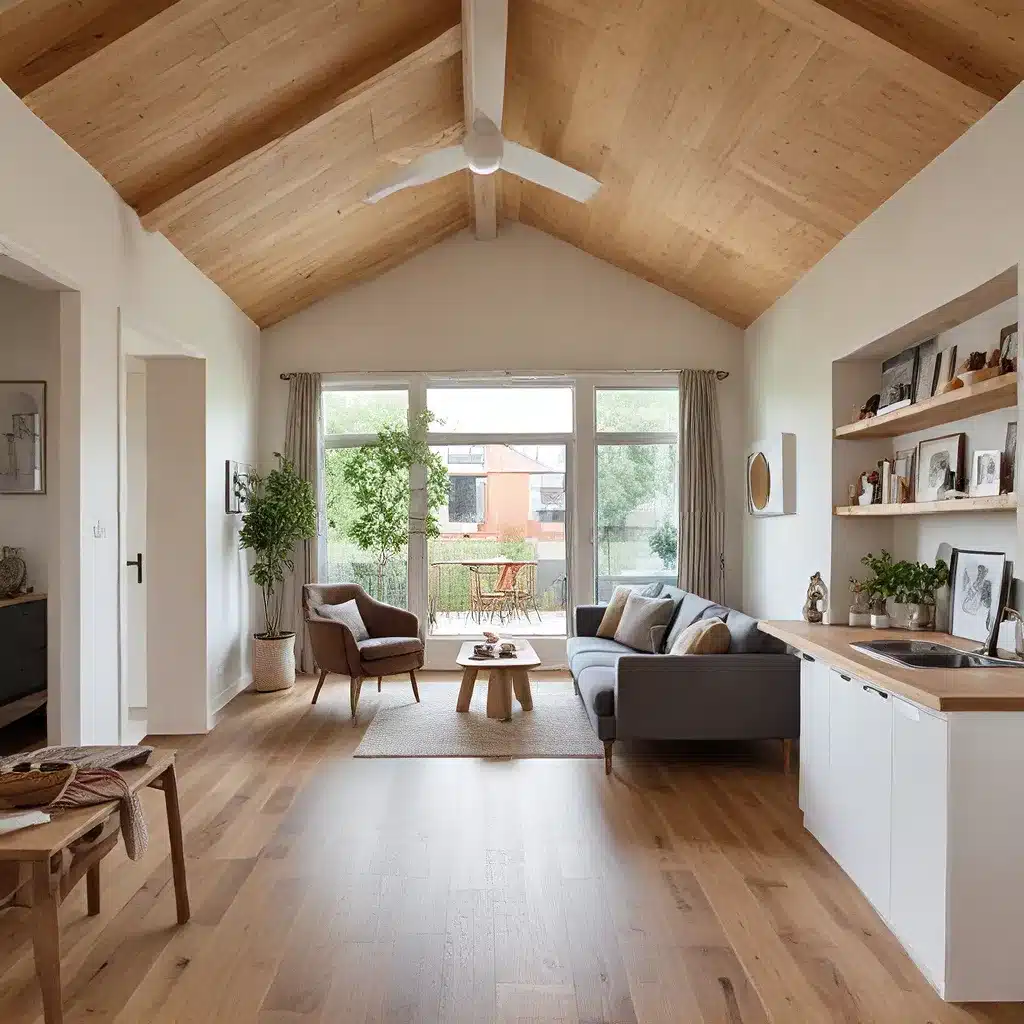
Embracing Adaptability: The Future of Interior Design
In a world of constant change, the homes we inhabit must evolve to meet our ever-changing needs. Adaptable floorplans and flexible design have become increasingly important as we strive to create living spaces that can seamlessly adapt to our shifting lifestyles. Whether it’s accommodating a growing family, remote work arrangements, or simply the desire for a more dynamic and personalized environment, the future of interior design is all about embracing adaptability.
At the heart of this design revolution is the concept of universal design, which aims to create spaces that are accessible, comfortable, and usable by people of all ages and abilities. By prioritizing flexibility and inclusivity, designers and homeowners can craft living environments that withstand the test of time and effortlessly adapt to the ebb and flow of daily life.
Universal design principles, such as open floor plans, adjustable features, and thoughtful spatial arrangements, are transforming the way we approach interior design. These strategies not only enhance functionality but also contribute to a more sustainable and accessible future for our homes.
Flexible Floorplans: Maximizing Livability
The concept of flexible floorplans is at the forefront of this design revolution. By incorporating adaptable elements into the layout, homeowners can create living spaces that cater to their evolving needs with ease. This could mean designing a room that can seamlessly transition from a home office to a guest room, or creating a multipurpose space that can serve as a study, a hobby area, and a cozy lounge.
Flexible floor plans also allow for effortless modifications as family dynamics change or new hobbies and interests emerge. Movable walls, transformable furniture, and strategic zoning can transform a space to accommodate different activities, ensuring that the home remains a dynamic and personalized sanctuary.
Moreover, flexible floorplans can contribute to a more sustainable living environment. By designing for adaptability, homeowners can minimize the need for costly and resource-intensive renovations, reducing their environmental impact and promoting a more circular economy within the home.
Designing for the Future: Strategies for Adaptable Interiors
To create adaptable abodes that stand the test of time, interior designers and homeowners must consider a range of design strategies and emerging trends. These include:
Open Floor Plans
Embracing open-concept layouts can foster a sense of spaciousness and fluidity, allowing for seamless transitions between different zones. This flexibility enables homeowners to reconfigure and repurpose spaces as their needs evolve.
Modular Furniture and Furnishings
Investing in modular furniture and multifunctional pieces can unlock a world of possibilities. Adaptable sofas, transformable coffee tables, and customizable storage solutions empower homeowners to shape their living environments with ease.
Flexible Zoning
Strategically dividing a space into distinct zones for various activities, such as work, relaxation, and entertainment, can enhance the versatility of a home. These zones can be delineated through subtle design elements, allowing for seamless transitions and adaptability.
Smart Home Technology
Integrating smart home technology into the design can elevate the adaptability of a living space. From automated lighting and climate control to voice-activated commands, these intelligent systems can optimize comfort, energy efficiency, and personalization.
Inclusive Design Principles
Incorporating inclusive design principles, such as universal design, can create living environments that are accessible, comfortable, and suitable for a diverse range of users. This approach prioritizes features like wide doorways, adjustable countertops, and ergonomic fixtures.
Sustainable Materials and Finishes
Selecting sustainable materials and finishes can not only contribute to a more eco-friendly home but also enhance the longevity and adaptability of the design. Durable, versatile, and low-maintenance materials can withstand the test of time and adapt to changing preferences.
Embracing the Luxury of Adaptability
In the realm of luxury living, adaptability has become a highly sought-after feature. Discerning homeowners and design-savvy individuals recognize the value of living spaces that can effortlessly transform to suit their evolving needs and lifestyle preferences.
Luxury interior design firms, such as Urban Grace Interiors, have honed their expertise in crafting adaptable abodes that elevate the living experience. By collaborating closely with homeowners and understanding their unique requirements, these design professionals can create bespoke solutions that seamlessly blend form, function, and flexibility.
From multifunctional furniture and convertible rooms to integrated smart home technologies, the luxurious adaptable abodes of the future offer a level of personalization and responsiveness that transcends the ordinary. Homeowners can enjoy the freedom to shape their living spaces, ensuring that their homes evolve alongside their ever-changing needs and desires.
Conclusion: Adaptable Interiors for a Changing World
As we navigate the dynamic landscape of modern living, the demand for adaptable, flexible, and future-proof interior design solutions has become increasingly crucial. By embracing universal design principles, leveraging smart technologies, and prioritizing sustainable materials, homeowners and designers can craft living spaces that not only meet their immediate needs but also anticipate the evolving requirements of the future.
The adaptable abodes of tomorrow will be the hallmark of a new era in interior design, where personalization, functionality, and sustainability converge to create living environments that truly enhance our quality of life. As we continue to navigate the challenges and opportunities of the future, the ability to shape our homes to suit our evolving lifestyles will be a true testament to the power of adaptable design.

